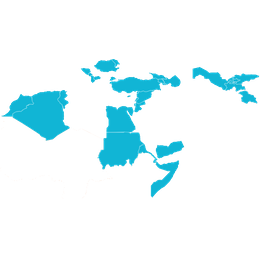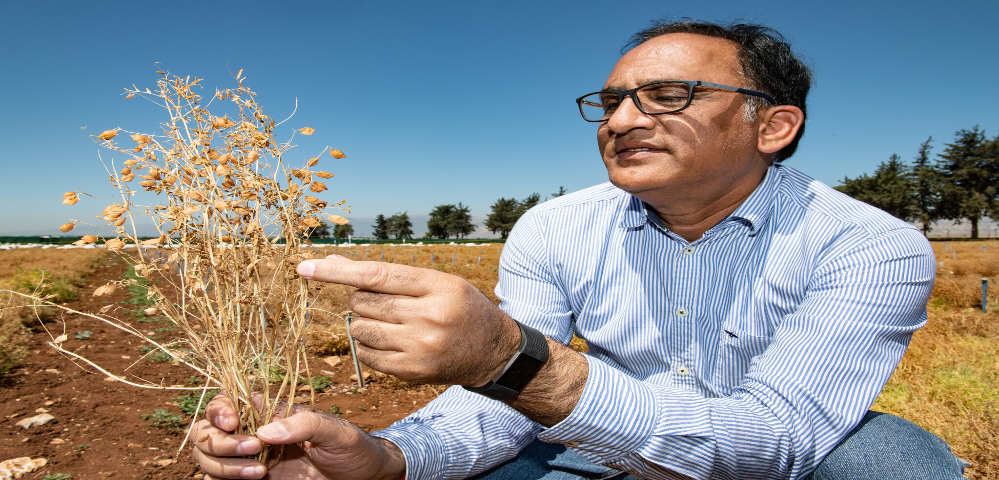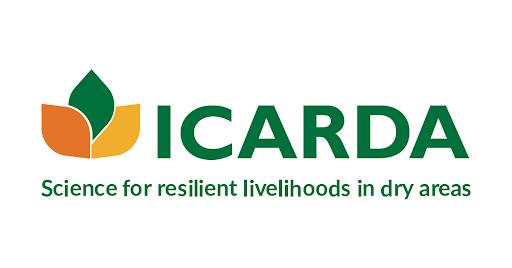Biofortified lentils
“Since I started using these improved varieties, my life has greatly changed. I have built a better house, I have more cattle and I was able to educate my children. All farmers of Gimbichu owe their livelihoods and their success to better lentils. We are very grateful to the government for rescuing us from poverty.”
Demekech Tekeleyohannes, farmer from GimbichuBACKGROUND
A lack of micronutrients is an enduring form of malnutrition, especially for women and children in rural communities. Introducing high-yielding biofortified lentils in local food systems can address nutrient deficiencies and improve crop yields.
WHAT’S INVOLVED
Biofortified lentils : To fight malnutrition, lentil varieties rich in iron and zinc can be cultivated in cereal systems including rice-fallow monocropping systems in South Asia
Wide-scale demonstration in farmers’ fields : Demonstrations encourage the cultivation of biofortified lentils and improve local practices.
Remote sensing : Real-time mapping targets rice fallows appropriate for growing improved lentil varieties.
Crop modelling : Crop modelling simulates lentil yields and determines dates for planting and growing in the target region.
EXPLORE THIS SOLUTION
Biofortified lentils can offer:
- Demonstrations to teach farmers alternatives to local cultivar practices
- Seed hubs for informal seed production that sustainably contribute to lentil production through adequate supply of quality seeds at farmer’s doorsteps

Countries involved
Bangladesh, India, Nepal, Syria, Morocco, Ethiopia
Project partners
Bangladesh Agricultural Research Institue, Indian Council of Agricultural Research, Nepal Agricultural Research Council, Ethiopian Institute of Agricultural Research, University of Saskatchewan, Clemson University, State Agricultural Universities in India, NGOs, and farmers’ organization, Women Self-help Groups, Government of India, HarvestPlus, OCP-Foundation, International Fund for Agricultural Development, OPEC Fund for International Development
Project dates
2006 – Present
Share this solution
Bookmark this solution
BookmarkShow Full Solution
Summary
Biofortified with zinc and iron to fight micronutrient malnutrition, varieties of lentils developed by the International Center for Agricultural Research in the Dry Areas (ICARDA) mature in less than 100 days and fit well in cereal-based cropping systems. Lentils provide a protein-rich legume crop that can improve nutrition and strengthen rural livelihoods.
Challenge/Problem
Over two billion people in the developing world suffer from micronutrient malnutrition, also called “the hidden hunger”. Iron deficiency in particular affects more than 47 per cent of women and children in developing countries, impairing physical and mental growth. Zinc deficiency can also hamper growth as well as weaken the immune system. To fight these deficiencies, ICARDA scientists have developed micronutrient-dense varieties of lentils through genetic enhancement, a staple in the diets of many poor people in South Asia and sub-Saharan Africa. Results suggest that a single 50-gram serving of biofortified lentils could provide the recommended daily allowance of micronutrients and vitamins. However, lentil production is low: diseases, pests, frost and waterlogging can affect yields, thus farmers opt to grow other remunerative winter crops instead. Integrating short-duration lentils biofortified with iron and zinc into cereal-based cropping systems can improve system productivity and provide a whole food solution to global micronutrient malnutrition.
Solution
In Bangladesh, Nepal and India, ICARDA has worked with national agricultural research and extension systems (NARES) to deploy improved lentil varieties along with effective, low-cost production technologies. Purchasing quality seeds, managing weeds and diseases, and harvesting, threshing, cleaning, grading and storage together cost an estimated US$500 per hectare. Even with this cost, farmers are able to double their income, with some studies showing a threefold return on investment.
To accelerate the adoption, ICARDA’s participatory research-for-development was carried out with inclusion of farmer organizations and women’s self-help groups and deployed village seed hubs and demonstrations in farmers’ fields. Lentil farmers were identified for large scale demonstration and farmers participatory, involving them in quality seed production for further distribution among the neighbouring farmers. This also included training of farmers in on-farm lentil production technologies. ICARDA also used remote sensing to map and monitor real time fallow duration after rice crop with the optimal residual moisture for lentil production. This monitoring also measured the proportion of land used in a given season and enabled crop modelling that could simulate lentil yields. This information has helped farmers better understand the optimal dates for planting and growing lentils and deploy varieties of appropriate duration in the regions.
ICARDA also adopted a strategy of biofortification, engaging national and international research bodies to enrich staple foods with micronutrients. Partners including the Governments of India, Bangladesh and Nepal, the HarvestPLus, OCP Foundation, the OPEC Fund for International Development (OFID) and International Fund for Agricultural Development (IFAD) have contributed to benefitting farmers in South and West Asia, North Africa and sub-Saharan Africa. Higher production of lentils through these scaling initiatives contributes to daily dish of low-income people who cannot afford animal products. House-hold nutritional support to small and tenant farmers are ensured, and preschool children and pregnant women are currently the major beneficiaries.
“Since I started using these improved varieties, my life has greatly changed," said Demekech Tekeleyohannes, a farmer from Gimbichu, Ethiopia. “I have built a better house, I have more cattle and I was able to educate my children. All farmers of Gimbichu owe their livelihoods and their success to better lentils. We are very grateful to the government for rescuing us from poverty.”
Results
The solution rendered the following results:
- High adoption: 99 per cent of the 150,000 hectares of lentil -growing land in Bangladesh are now planted with the new improved lentil varieties.
- Replaced exports: The additional domestic lentil production in Bangladesh has replaced expensive imports. Nepal has become a net exporter of lentils.
- Yield increase: Lentil production in India has increased from 1.06 million tons in 2012 to 1.64 million tons in 2018, and yields have grown from 678 kg/ha in 2011 to 1006 kg/ha at present. With the improved production package, biofortified varieties showed a 35-67 per cent yield advantage over local cultivars.
- High revenue: Over 36,000 tons of addition lentils were produced using improved technologies, worth US$28.9 million in Nepal.
- Participatory informal seed systems: Almost 3,800 tons of quality seeds of improved varieties were produced using Village Seed Hubs (VSH) and public sector organizations, and distributed
- Multi-nutritious crop: Lentils are rich sources of protein, micronutrients and vitamins including iron, zinc, selenium, folates and carotenoid.
- Additional innovations: Crop modelling that simulates lentil yields has further popularized this solution in the target regions.
- High participation rate: Large number of farmers participated in technology up-scaling following recommended package of practices, upgraded knowledge and skills through trainings, Field Days, Exposure Visits, etc. Additional farmers were motivated through “seeing is believing” approach.
Lessons Learned/Potential for replication
Knowing how genes and the environment interact is important for developing stable biofortified cultivars and designing location-specific breeding in any biofortification program. In lentils, the levels of iron and zinc in the seeds vary with weather, location and soil conditions such as pH, temperature, precipitation and nutrient composition. Multilocation testing of lentil varieties in Bangladesh, Ethiopia, India, Nepal, and Syria showed significant gene-environment interaction for iron and zinc. Levels of iron in the seeds were more sensitive to environmental fluctuations than levels of Zinc. The study also suggested that high iron and zinc can be enhanced together in short-duration varieties without compromising the grain yield.
Next Steps
Large-scale feeding trials, as well as studies related to bioavailability of iron and zinc, are required to assess the impact of biofortified lentils to support human health. In addition, further research on the relationship between gender and lentil production is needed. Indeed, Gender research related to biofortified lentil will help understand the gender sensitive constraints within the divisions of roles and labour affecting the resilience of livelihoods. An ICARDA study exploring gender-based divisions of labour showed that lentils can constitute 50 to 100 per cent of smallholders’ income. Going forward, continuous funding, research and networking with stakeholders will be essential to sustainably increasing the adoption of the biofortified lentils.
Last update: 25/05/2021



